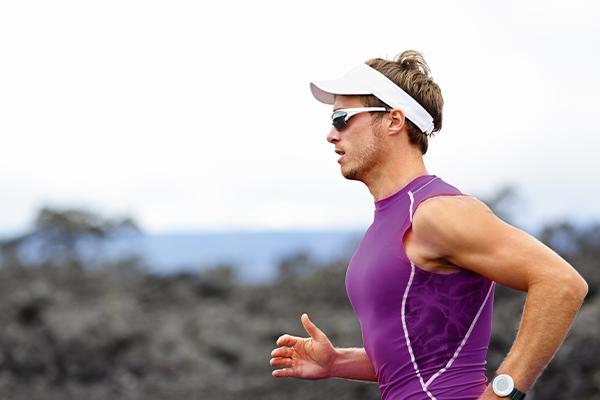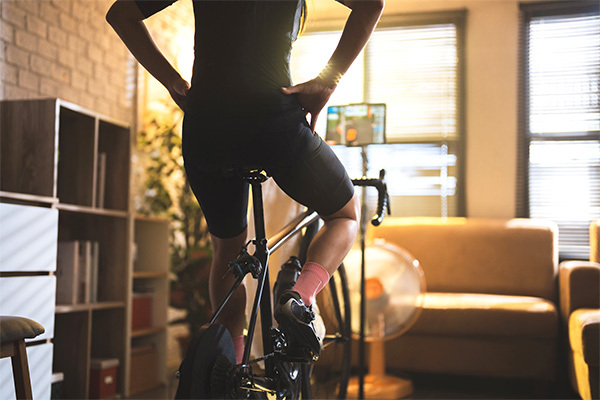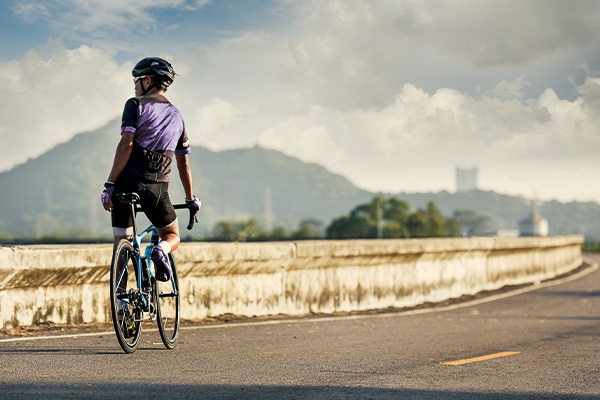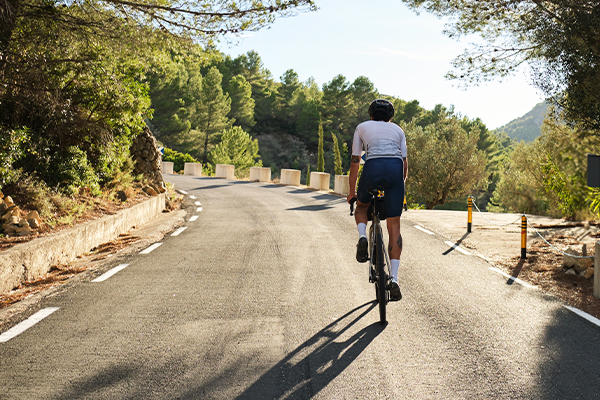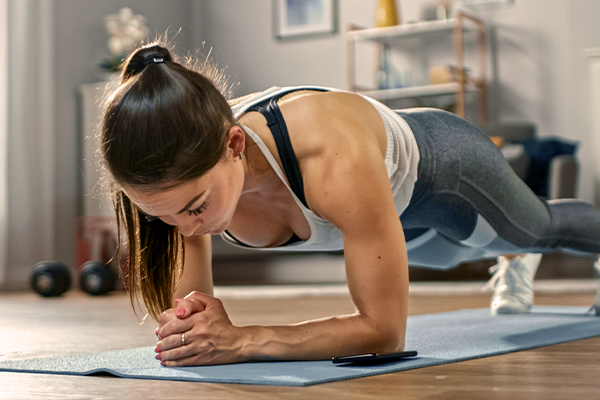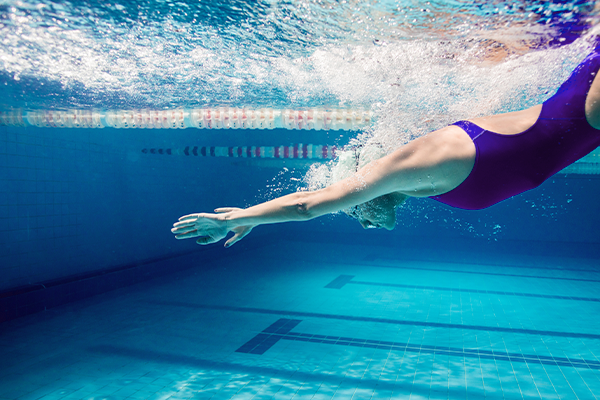Whether you’re getting ready to line up at your first event or you’re a seasoned veteran looking to qualify for the UCI Gran Fondo Worlds, training is the difference between feeling accomplished or feeling dejected when you cross the finish line.
Throughout this blog, I take you on a journey of self-discovery, guiding you through all the irrelevant and non-individualized training advice found on Google — or from your riding buddies — and helping you find the right pathway for your Gran Fondo preparation.
Goal setting
The first question you need to answer is, “Are you focused on completing or competing?”
The former describes someone happy enough to experience the day, take it at a comfortable pace, and focus on enjoyment and just finishing. The latter describes someone who is treating the event as a race — maybe aiming for the overall win, qualification for the UCI Gran Fondo World Championships, or even just for a personal best finishing time.
Once you decide what kind of cyclist you are, take an honest, objective look at your current ability. To keep your ego and ambitions out of the equation, use your training data or do some field testing to gauge where you are. Some metrics, such as recent volume and load, current fitness, and thresholds, can provide great insight into your current ability.
With a clear picture of your baseline, you can start looking at events and the demands of those events. If your current longest ride is three hours, it is highly unlikely that you will finish Mallorca 312 (an incredibly challenging Gran Fondo course with a 14-hour time limit for receiving a finisher medal) with only one month to train. This stage can be tricky, but being realistic ensures you set yourself up for success.
Once you have a rough idea of what you can achieve, you can start to look over some of the available options. Factors such as travel distance and cost might come into play. If you aim to compete, you might try to find an event you can specialize in. For example, if you are a lightweight rider who climbs well, a mountainous event might be a good one for you.
Methodology
Knowing where your current ability is and where it needs to be, you can start putting a plan in place for getting there. Having a big picture in mind will aid this next step by helping you train consistently and see the biggest improvements. This is where you will periodize your training.
Long low-intensity and steady-state winter training is a little outdated; even the pros include some intensity year-round now. That being said, don’t write it off completely. If you’re a new cyclist, spending your off-season developing aerobic fitness by doing long (“long” being a subjective term here — an hour is a long ride for someone who has never ridden a bike) low-intensity rides might bring the most noticeable gains.
To understand what you need to do, look at your biggest limitation (what needs improving most). If you need to develop your aerobic fitness, spending a lot of time during the off-season riding in the endurance zone (zone 2) will probably be the biggest win. If you’re already capable of riding the duration but need to work on climbing speed or power, work on these specific areas. Of course, you will want to maintain your strengths, too, so it’s always a good idea to include some long, low-intensity rides.
While there are many factors to consider and countless ways to adjust this approach, it’s wise to spend the most time improving your weaknesses. Once you’re satisfied with your progress, you can start to work on improving your strengths. Training in this manner will help you raise your riding level to the point where your goals are achievable.
Training
If you’ve completed the work in the last two sections, the work in this section is actually relatively easy. Well, deciding on what training to do is easy — not necessarily the training itself! You should know your current ability, where it needs to be, what you need to work on during the off-season, and what you will do as you get closer to the event itself.
Even if you focus on developing your threshold power, you probably won’t spend 100% of your available time on it. Generally speaking, the less time you have available to train, the higher the percentage of time you dedicate to your main objective — in this case, developing threshold. So, if you have five hours per week, you might spend most of that developing your threshold versus someone with 15 or more hours to train, who will spend far less time as a percentage of their total but still more actual hours.
Two of the most important factors to consider are progression and consistency, which are closely linked. Slowly ramping up your training from your current ability to your desired ability will be the easiest way to ensure you don’t overload your body and mind. In turn, this gradual build will help you maintain consistency. This gentle progression can be easily accelerated if you find it too easy, but utilizing a 3:1 or 2:1 load-to-recovery cycle (three or two weeks of training and one week focused on recovery) and adjusting based on these blocks will help you pace yourself. Often, a workout at the beginning of a training block will feel completely different from the same workout at the end. If you find yourself completing the entire block with ease, that is a good sign that it’s time to increase the load.
Nutrition
“Train low and race high” describes the methodology used to help your body fuel more from its fat stores. While our fat stores provide an almost unlimited fuel source, metabolizing fats takes a long time, especially compared to how quickly our bodies metabolize carbohydrates. Having a fat-adapted body can be especially important for athletes who are riding ultra-endurance events where fuelling from fat stores is essential. For the average Gran Fondo, the risks of not fuelling workouts correctly — thus not giving your body enough chance to recover — often hinder improvements more than they help.
Periodizing your nutrition might bring the greatest adaptation you can make as a cyclist. This approach involves eating fewer carbohydrates on easy days and more carbs on days that prioritize intensity above tempo (zone 3). The strongest way to ensure this works is to focus on getting most of your daily carbohydrate intake before, during, and after training. On low-intensity days, you should still consume carbs in this manner. Even if you have identified your “fat max” power in testing, you are still burning glucose at this intensity, so replenishing it with carbohydrates will improve recovery.
Recently, we’ve seen more professional teams focusing on fueling their athletes in races, aiming to get far higher than the old advice of intaking 60g of carbohydrates per hour and, in some cases, pushing this to 120g. While there is strong evidence to suggest this approach is achievable for everyone, it comes with the caveat that you need about 12 weeks for your gut to adapt to digest this much. Regardless of your nutritional methodology, it will be smart to start fueling around 12 weeks out to allow your system to adjust and digest the most fuel on event day. Start with 60g carbs and increase slowly every week until you get to 120g. In almost all cases, cyclists stand to lose far more by being unable to digest fuel than by carrying a little extra weight or being slightly more fat-adapted.
Have fun
I tell all my clients that we need to have as much fun on the journey to our goals as we do in achieving them. (Of course, I also like to add that there will likely be times when they are cursing me in training!)
One of the biggest warning signs that something isn’t working is when you stop enjoying the cycling or find that it simply isn’t fun anymore. Don’t be afraid to change it up. That said, don’t avoid challenging workouts — those aren’t always fun at the moment. Instead, look back after a block of training and ask yourself if you felt engaged or were just doing it because you think you should.
Long-term performance progression relies on your mental desire and will to do something. Too many people ignore this, focus on doing the “right” training for their Gran Fondo, and then hang the bike up for three or more months because they’re just so sick of it.
None of us started riding bicycles because we didn’t enjoy it. We started because it was fun. Let’s remember that and find ways to make sure our training journey is as fun as the outcome.
Coach Pav
Coach Pav is an Amazon #1 New Release Author and a coach to clients who have set world records (Mark Beaumont), earned their world champion jersey (Steve Bate MBE), and won ultra-cycling events (Matt Seward and Thomas Becker).
Mostly, his clients are those riding a Gran Fondo or two, and some are even riding his personal favorite: the Maratona dles Dolomites.
